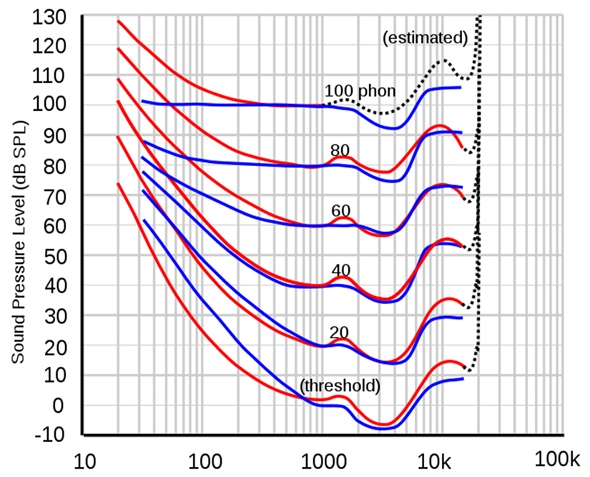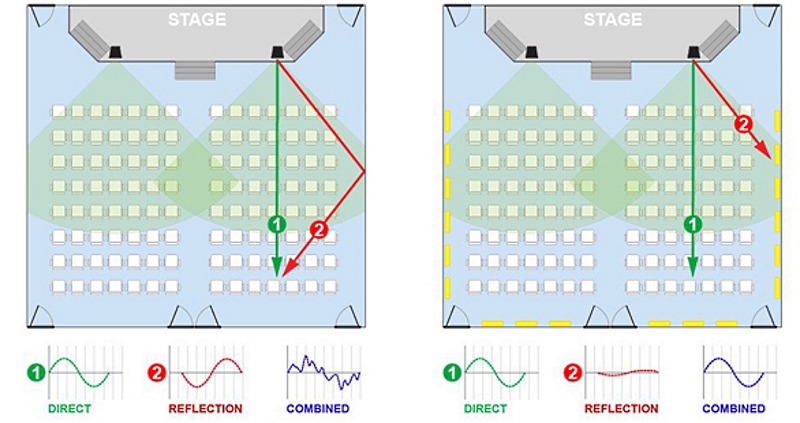
Multi-Function Spaces
One of the most common questions: how do we make a room work for all of the different types of events it hosts? This problem is common to houses of worship, school auditoriums, and other spaces that must work well with both speech and music.
With some types of music, such as orchestral works or chorus, a longer reverberation time will enhance the performance, while with voice, long reverb trails make it difficult to comprehend what is being said.
There are basically two ways to approach the problem: introducing movable acoustics or utilizing artificial reverberation. Heavy theater drapes can be very effective. These can be set up to manually be opened (absorptive) or closed (reflective) depending on the performance.
Electric motors can also be installed to automate the system. To work properly, the drapes must have sufficient mass to trap the sound within the air cavity behind. The downside is that these heavy drapes can be very costly, especially if you employ automation.

The other primary option is treating the room using acoustic panels and then adding artificial reverberation when needed. There are high-end venues around the world that successfully use this approach, and for the “regular venue,” adding digital reverb to the mix can often produce acceptable results.
It’s worth noting that musicians play better when they’re in a comfortable acoustic environment. For instance, a chamber orchestra or chorus will perform better if they’re surrounded by some natural room reverberation. This can be introduced by positioning reflective panels (i.e., clear Plexiglas) above the musicians or by applying some movable drapes to their area so that the walls can be exposed and made reflective when needed.
Understanding The Specs
Gauging the performance of an acoustic panel is just as easy as comparing microphones or loudspeakers. The sound absorption coefficient curve shows how well an acoustic panel will absorb energy at the various frequencies. A factor of 1.00 equals 100 percent absorption at that given frequency.
Be aware that acoustic panel makers that cater to general contractors will often promote a single digit “average” that has no practical real-world value. This is akin to saying a sound system is 100 percent effective at 1 kHz.
So just as you check the specifications to see how well a loudspeaker produces an even frequency response, also look at the panel data when it comes to absorption. In particular, make sure that the panel is actually able to absorb energy in the voice range. Further, if you’re trying to control bass, evaluate thicker panels that are able to “reach down” and absorb lower frequencies.
A good trick is to introduce an air cavity behind the panel (like a plenum ceiling or the drapes discussed above), which can often lower the effective frequency response by an octave without adding much in the way of cost.
Better Outcome
In light of current budget restraints, there has been a shift toward reducing costs. Large panels are expensive to ship because they require special delivery using a flatbed truck, and further, a lift truck is needed to enable installation.
Sound and A/V companies are well equipped to improve the actual sound of rooms, but for years, acoustics have often been ignored or left out of the equation. With modern sophisticated loudspeakers and digital electronics, it has become apparent that simply changing the sound system still leaves plenty of room for improvement. Smaller panels that are grouped in a modular format have gained popularity because they can be shipped using a common carrier, and these can often be installed using a simple ladder. This approach reduces costs while still furthering acoustic performance.
As a result, more attention is being paid to room acoustics, often before a new system is considered. It not only results in a better sounding room, but can boost a company’s reputation for delivering good results.
